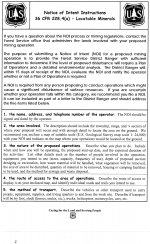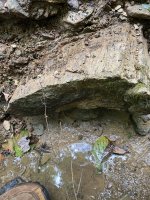So I wanted to start a discussion about reclamation bonds, their factors and costs. So I'm gonna lay out a scenario and any feedback about other factors that may affect the bond amount, and any estimation of what it could cost would be very helpful.
So here's the scenario
A person wants to start a small/ mid scale placer operation, the claim is mostly flat with a creek running through one side. The mining plan is to strip the top soil and vegetation and run everything else down too bedrock at 12' . They will be using a small excavator to dig, and feed a trommel. Water will be pumped straight from the creek, the used water will flow into a settling pond and settle through the dirt back into the ground water. Tailings will be used to back fill as more ground is opened. Let's say at Max 20,000 yard of material will be moved in a year, equating to around an acre of surface area. And the vegetative coverage is mostly grasses and sage with a few small trees and no pocket gophers or anything else crazy and protected.
So what else is considered in a reclamation bond, and does anyone have an estimate?
So here's the scenario
A person wants to start a small/ mid scale placer operation, the claim is mostly flat with a creek running through one side. The mining plan is to strip the top soil and vegetation and run everything else down too bedrock at 12' . They will be using a small excavator to dig, and feed a trommel. Water will be pumped straight from the creek, the used water will flow into a settling pond and settle through the dirt back into the ground water. Tailings will be used to back fill as more ground is opened. Let's say at Max 20,000 yard of material will be moved in a year, equating to around an acre of surface area. And the vegetative coverage is mostly grasses and sage with a few small trees and no pocket gophers or anything else crazy and protected.
So what else is considered in a reclamation bond, and does anyone have an estimate?
Amazon Forum Fav 👍
Upvote
0










